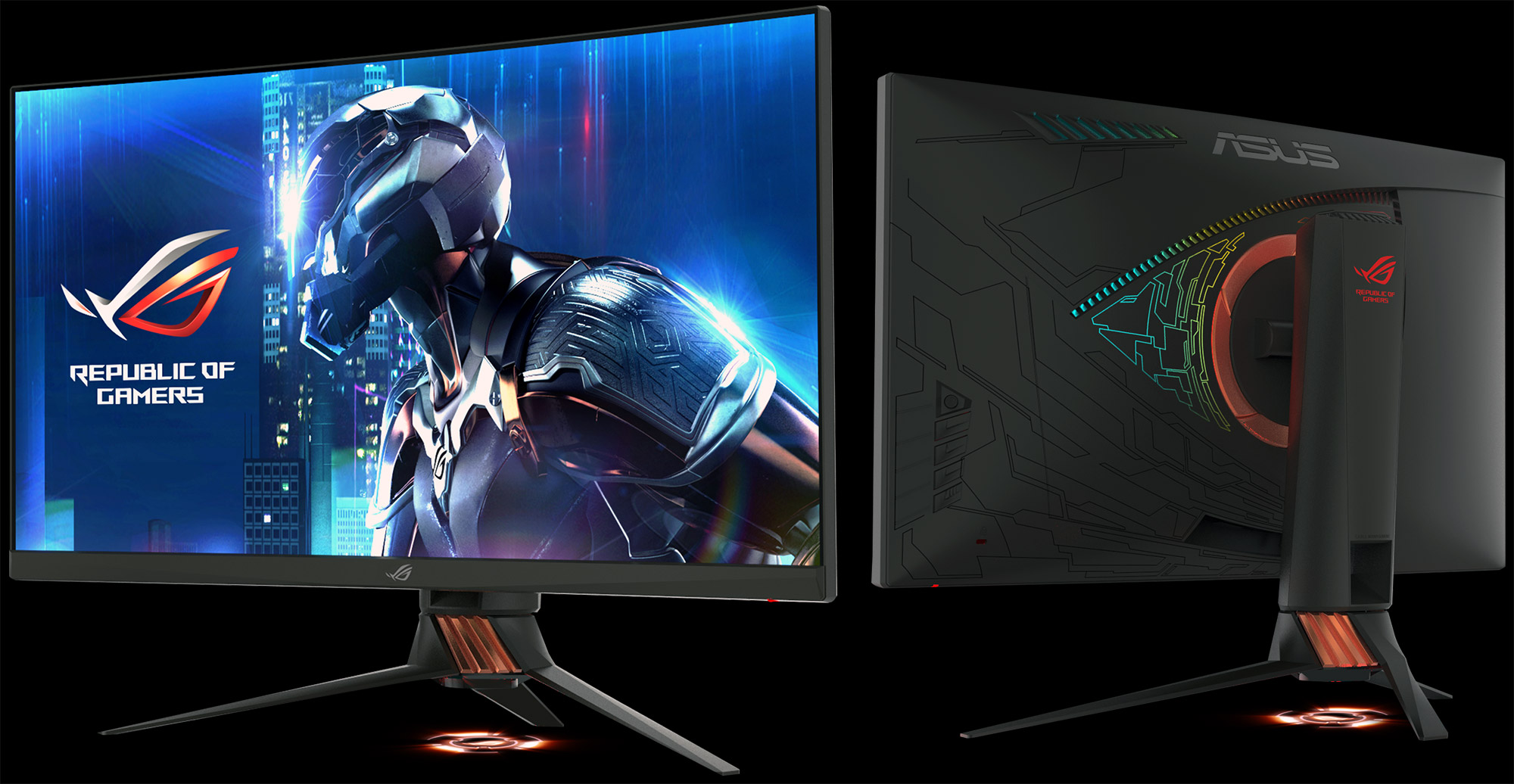The Poseidon GTX 1080 Ti and other new ROG products debut at JTR: Outshine the Competition
It was a busy weekend for ROG. On April 1, at the Join the Republic: Outshine the Competition event in Berlin, Germany, we introduced a collection of fresh products and an exciting new initiative. Despite the date, this was no joke.
A first peek at the Poseidon GeForce GTX 1080 Ti
While ASUS Turbo and ROG Strix versions of the GeForce GTX 1080 Ti have already been announced, many of you are waiting for the Poseidon. ROG’s latest liquid-and-air hybrid was revealed at the event; it has everything you’d expect, plus a few new touches that take the card to the next level.

Our next-gen DirectCU H2O cooler combines liquid and air in a larger 2.5-slot design. The expanded heatsink boasts 40% more area than its predecessor, while the updated plumbing improves the liquid flow rate by 22%. Support for standard G1/4 fittings make it easy to add the card to custom loops, and dual FanConnect II headers let the card manage system fans for gaming-optimized cooling.
The Poseidon predictably features Aura Sync lighting, but that’s not all. It also adds a new twist with an infinite-reflection badge that lets you stare into an RGB abyss. I can’t wait to see one of these inside In Win’s ROG-certified 805i chassis, which uses a similar effect on its front face. That shouldn’t take long; the ROG Poseidon GTX 1080 Ti will be available in Q2.

The curved ROG Swift PG27VQ keeps pace with a 165Hz refresh rate
Ultra-fast graphics deserve a display that can keep up, so it’s only fitting that we also introduced a new monitor: the ROG Swift PG27VQ. This 27-incher features a frameless design and 1800R curvature that are perfect for panoramic multi-monitor setups. A 165Hz maximum refresh rate combines with NVIDIA G-Sync technology to provide silky smooth graphics, while a speedy 1-ms response time minimizes motion blur. The PG27VQ has a 2560x1440 WQHD resolution that strikes a good balance between pixel density and performance—you won’t need multiple graphics cards to hit the peak refresh rate.

Although most of the action takes place at the front, the latest ROG Swift gaming monitor has illuminated accents on the back. The RGB LEDs are tied into Aura Sync, allowing the monitor to match the glow of the rest of your rig. Look for the PG27VQ in Q3.
Flexible 10-Gigabit networking arrives on the ROG Areion 10G
Game installs are growing thanks to higher-fidelity assets, video sizes are ballooning due to 4K content, and even photos are getting huge as they pack more megapixels. Networking needs to get faster to keep up, which is why we’ve introduced the ROG Areion 10G NIC. As the name suggests, the card supports 10G networks with 10X the bandwidth of conventional Gigabit Ethernet. Perhaps more importantly, it also supports intermediate 2.5G and 5G speeds, so you can step up to faster networking as your needs evolve. Backward compatibility with Gigabit and old-school 100Mbps networks ensures you can connect to slower networks when required, as well.

The ROG Areion 10G is powered by an Aquantia AQC-107 chip, and it rides a PCI Express 3.0 x4 interface with ample bandwidth for wicked-fast transfers. Pushing data at 10G speeds is serious business, so the card is covered by a full-sized heatsink to keep temperatures in check. We’ve also added easy-to-see LEDs that track network activity and connection speed. The ROG Areion will be available this month.
Switch-hit with the ROG Pugio gaming mouse
Our expanding lineup of gaming peripherals has a new member with an ambidextrous design. The ROG Pugio mouse is built for both right- and left-handed use, and we didn’t stop at the shape. The thumb buttons attach with magnets that let you swap sides in seconds. A magnetic cover shields the button area on the other side, preventing your ring or pinky finger from causing unintended clicks.

Under the hood, the Pugio has a precise optical sensor with a 7200-DPI resolution. The left and right clickers are backed by durable Omron switches rated for a staggering 50 million clicks. Those switches are socketed, so you can swap them out to customize the click feel. Aura Sync extends customization to the RGB lighting, which can be controlled independently or synchronized with the rest of your system.
Aura is opening up with an SDK for developers
Aura Sync is the most comprehensive full-system lighting solution around, and it’s about to get even better. We’re working on an Aura SDK that gives game developers real-time control over the lighting on compatible motherboards, graphics cards, peripherals, and other components. This initiative has enormous potential for games and other software, and I’m eager to see how developers take advantage. The Aura SDK will be officially launched at Computex, so stay tuned for more details.
The Outshine the Competition event wasn’t just about introducing new gear. We also showed off the latest ROG products, including our jaw-dropping Maximus IX Extreme motherboard and HDR-infused Swift PG27UQ monitor. Hit the link below for the full press release.


